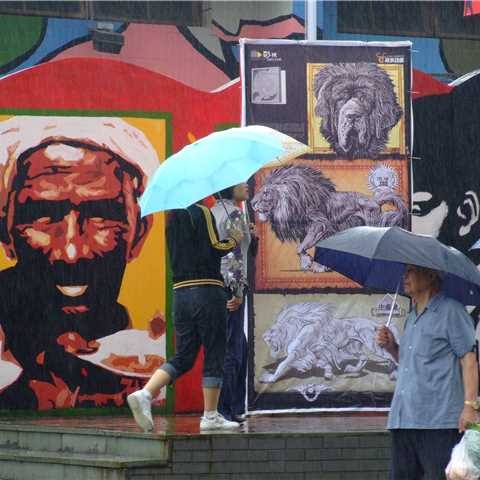



Huangjueping Graffiti Street, located near the Sichuan Fine Art Institute in Chongqing's Jiulongpo district, is said to be the largest graffiti art venue in the world, with a total length of 1.25 kilometers and an area of about 50,000 square meters.
In 2006, contemporary Chinese oil painter and former president of the institute Luo Zhongli put forward the idea of beautifying the facade of the 37 residential buildings facing the street, using graffiti art to improve the image of the old neighborhood.
Through the efforts of the local government and the institute, more than 800 people, including workers, students and artists participated in the creation, which required 12,500 kilograms of architectural paint and nearly 30,000 brushes. It took 150 days to complete from December 2006 to April 2007.
However, there was controversy from the start because the process would create some inconvenience for many residents. So the project team signed an agreement with more than 1,000 local residents promising not to interrupt their daily lives.

In June 2007, a graffiti art festival was held on the opening day of Huangjueping Graffiti Street, attracting nearly 350,000 visitors.
At the end of 2007, it was recognized in Chongqing as one of the Top 10 Outstanding Projects of Urban Public Buildings for its economical facelift.
These days, graffiti — an Italian word that means scribbling on a wall — is either recognized as an art form or vandalism. The modern art form of graffiti is believed to have originated in New York in the late 1960s.
World famous graffiti art venues include the Berlin Wall in Germany and the Graffiti Bridge in Australia. There are well-known graffiti walls throughout China as well, such as the 730-meter-long "Beijing Wall", which was created by 400 volunteers especially for the 2008 Beijing Olympic Games.




If you have any problems with this article, please contact us at app@chinadaily.com.cn and we'll immediately get back to you.